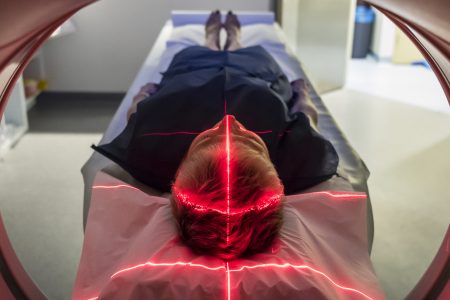Extremely Shy & Genetically Close
Social anxiety disorder, or ‘extreme shyness’ runs in families. So, being genetically close to a person with social anxiety substantially increases the risks of developing the disorder. But what brain characteristics underlie this susceptibility?
In the novel ‘Extremely Loud & Incredibly Close’ by Jonathan Safran Foer, the nine-year old Oskar Schell wanders through New York City in order to find the lock that belongs to a mysterious key that was owned by his father. His father lost his life in the attack on the World Trade Center on 9/11, and for Oskar his search is a way to give meaning to his life (Safran Foer, 2005).
Social anxiety disorder (SAD)
In my thesis ‘Extremely Shy & Genetically Close’ (summary in Dutch available online), I describe a search as well: over the last couple of years, I have aimed to gain more insight into the vulnerability to develop social anxiety disorder (SAD), by investigating brain alterations underlying this ‘extreme shyness’. Patients with SAD are characterized by an intense fear of being negatively evaluated by other people, and due to this fear, they avoid social situations as much as possible, which has significant adverse effects on important areas of their functioning. As SAD is characterized by a typical onset during late childhood and early adolescence, as well as a chronic course, insight into the factors that make children and adolescents vulnerable to developing SAD is pivotal to get a grip on the disorder and prevent its lifelong negative consequences.
Genetic vulnerability
Based on the results of family and twin studies that showed that being genetically close to a patient with SAD leads to a heightened risk of developing the disorder, we designed the Leiden Family Lab study on Social Anxiety Disorder (LFLSAD), and focused on the genetic vulnerability to developing SAD. We invited families in which multiple family members suffered from social anxiety to participate in the study, and we were very happy that several patients with SAD, who preferred to be wallflowers in daily life, were willing to face their fears and visit our research laboratory together with their family members. The so-called multigenerational and multiplex design of the LFLSAD (i.e., family members of two generations participated, and families contained at least two clinical or subclinical SAD cases) was especially chosen to enable us to examine brain characteristics which co-segregated with social anxiety within families and were heritable. Heritable characteristics of this kind associated with the disorder are called ‘endophenotypes’, and such measurable characteristics on the pathway from genotype to phenotype can provide a stepping stone for further investigation of the underlying genetic variations in complex psychiatric disorders.
fMRI
By using structural and functional magnetic resonance imaging (MRI), I discovered several neurobiological endophenotypes of social anxiety disorder, which were spread over the brain. To start, we were able to detect variations in brain structure which were associated with the level of social anxiety, and which were partly heritable. Furthermore, we found that increased activation in the medial prefrontal cortex and the temporal gyrus (related to reading stories on unintentional violations of social norms) and prolonged activation of the amygdala (in response to faces with a neutral expression) were promising candidate endophenotypes of SAD.
Brain structure and function
These findings are interesting, as they indicate that neurobiological endophenotypes which are thought to be among the neural mechanisms that translate genetic effects into complex psychiatric disorders could be detected using neuroimaging. So, although environmental influences are important as well, the LFLSAD underscores that the tendency to be extremely shy is due at least partly to innate and inherited alterations in brain structure and function.
Recognition
In addition to these scientific results, which we hope may lead to improvements in treatment at the long term, the LFLSAD also had more direct personal benefits for participants. Participants told us that the study made them aware that their extreme shyness was not a personal shortcoming, but a psychiatric disorder, which was associated with alterations in their brain and was a subject for investigation. This recognition was important for them, and also opened up the conversation about their personal struggles.
Treatment
Furthermore, participation in the LFLSAD may have contributed to a lower threshold for help-seeking in both parents and offspring. Although none of the participants within the LFLSAD with SAD had been treated for the disorder before entering the study, following their participation several indicated that they wanted to receive treatment to reduce their social anxiety. This is important, as patients with SAD do not easily seek treatment, most likely due to embarrassment or an underestimation of their condition. As a result, there is a striking delay between the age of onset of SAD and the age of first therapy, even up to 15 years. In addition, children with anxiety disorders often face barriers to treatment access, with ‘parents not knowing where or from whom to seek help’ the most common access barrier. This is a concern, as treatment during sensitive periods in brain development, preferably before the onset of clear psychiatric symptoms, might prevent the development of full-blown anxiety disorder later in life.
Reduce suffering
All in all, continued translational research which puts socially anxious participants in the spotlight is of utmost relevance in order to reduce the everyday, often unnoticed, suffering of these patients.





